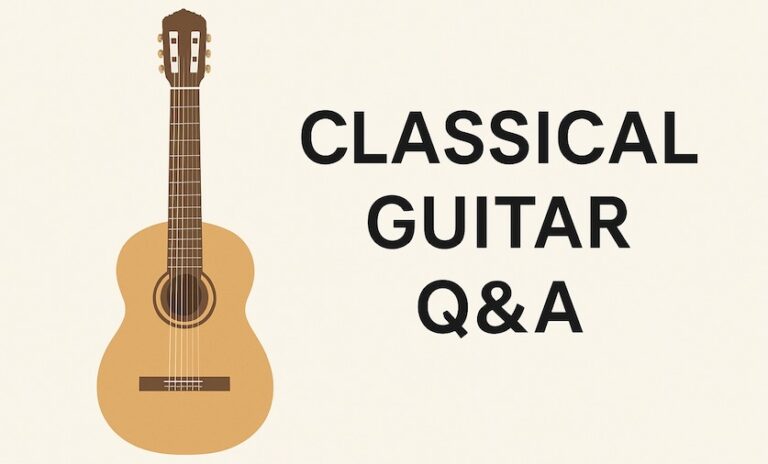This lesson comes from my new book Classical Guitar Repertoire Lessons Grade 3 – Seven pieces at the grade three level with dedicated lessons preparing you for each piece.
Ejercicio No. 2 from Colección 12a de Ejercicios, Op. 42 by José Ferrer (1835-1916) – YouTube Video Lesson Link – For the final piece we will study an active work that will challenge your playing skills. This piece has no barres, hinges, or different tunings, but it will be a thicker texture and will require greater finger independence and dexterity. The lesson elements here are: playing in thirds, ornaments (grace notes), and harmonics.
Ornaments (Grace Notes) – We will, for now, avoid a lengthy discussion on appoggiaturas and acciaccaturas which are types of grace notes. The main point is that these smaller notes are ornaments that decorate the primary melody note. The word acciaccatura comes from the Italian verb acciaccare, “to crush” which nicely describes how these grace notes combine with the primary melodic note on the beat. There are plenty of discussions about which notes should be played on the beat or just before the beat during different eras but for this introduction we will consider all the grace notes to be played on the beat. This will keep our rhythm and beat structure secure. The video lesson should help you imitate the sound.



Hi Bradford,
I’ve just started this lesson and have a question about how the ornamentation notes are typed. In e.g. bar four there is a pull-off ornament G->F which is written with a slash on the G, something we don’t see in the ornaments written for the hammer-on + pull-off ornaments (e.g. F->G->F in bar four). What does this mean?
The slash through the grace notes indicates that it is a acciaccatura. All you need to know is that this is a shorter version of the appoggiatura. Nevermind all this, play the ornament quickly on the beat. Acciaccatura is literally to “to crush” into the beat. So crush the G to F into the beat as best you can but don’t dwell on it. Just think of a rapid and light reflex-oriented motion.
Hello Werner,
Quick question about the grace notes. I watched the video and read the part in the book. Do you pluck the entire chord if it is tied to the grace note, or only the notes of the chord that are not tied- on beat with pull off of the grace note? Appreciate your insight, Thank you!
– Jeff
The grace notes are played on the beat with chord/bass notes. So in measure 4 you would play A-D-F (grace note) at the same time while crunching the remaining upper G-F afterward (although almost indistinguishably part of the same slur gesture). So in essence, the grace note is played on the beat and is part of the upper line which follows. Same thing in measure 14, the grace note C is played on the beat with the bass note A. In measure 28 the A and the D are played on the beat together as well. Don’t over think it, it’s essentially all crunched into the beat as one gesture.